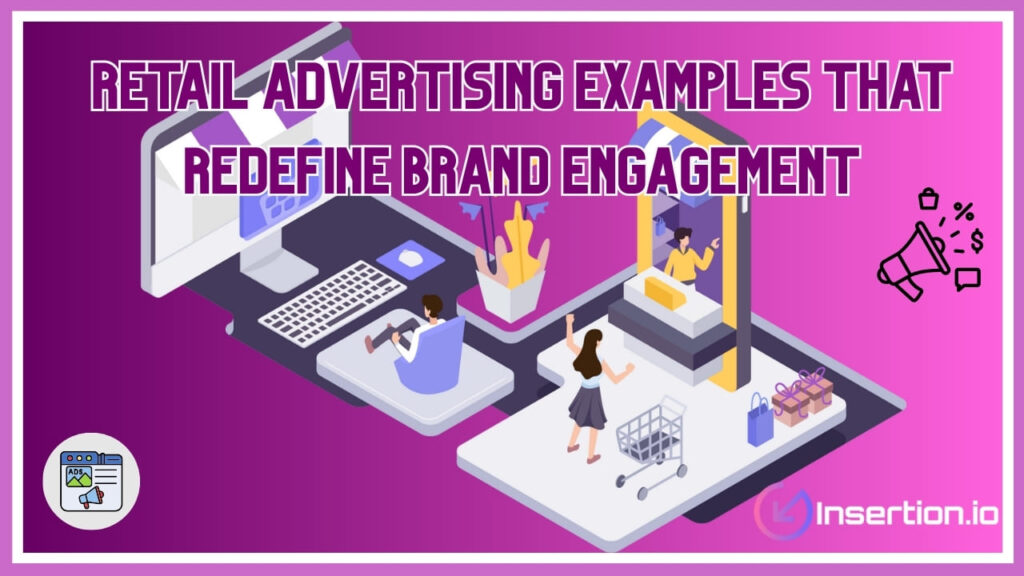
Are you pouring effort into a product ad only to see minimal engagement by potential customers? More than 60% of digital advertising campaigns fall short of measurable goals because the strategy fails to target the right audience or clearly define the product’s unique selling proposition. Fortunately, crafting a great product advertisement need not remain elusive.
This complete guide will walk you through every stage of creating a compelling product advertising campaign, from defining the target audience to producing a video ad and measuring outcomes. Follow these steps to build an effective marketing campaign that boosts brand awareness and drives product purchases.
What is Product Advertisement?
Product advertisement is a marketing strategy that promotes a specific product or service to attract potential customers and boost sales. It highlights the features and benefits of a brand or product across various advertising channels, including video, social media, radio, and print. Advertisers create ads with a clear call to action to persuade audiences to purchase the product.
Moreover, an effective product advertisement focuses on the unique selling proposition and appeals to the target audience through engaging video content or display ads. Consequently, successful product advertising enhances brand awareness and drives measurable return on investment.
Types of product advertising
Comparative advertising:
Comparative advertising highlights a specific product or service by comparing it with another brand or product in the same category. This advertising strategy emphasizes the product’s unique selling proposition and key features that set it apart from competitors. Moreover, advertisers use video, display, or print advertising to effectively showcase their strengths. Consequently, this type of advertising helps the target audience identify the best product based on clear differences. Furthermore, comparative advertising builds brand awareness, increases credibility, and improves return on investment when executed honestly, creatively, and with strong marketing strategies.
Competitive advertising:
Competitive advertising focuses on establishing a brand’s dominance through a powerful advertising campaign designed to outshine rivals. It promotes a specific product or service through persuasive videos, social media ads, and digital marketing. Advertisers use compelling video content and a strong call to action to encourage viewers to purchase the product. Furthermore, this type of advertising targets potential customers by emphasizing features and benefits that set the brand apart. Consequently, competitive advertising improves brand awareness, strengthens customer loyalty, and enhances market share. When supported by creative marketing strategies, it ensures consistent visibility and long-term success.
Innovative advertising:
Innovative advertising uses creative strategies and advanced digital techniques to attract and retain new customers. It combines video marketing, professional video production, and animation-style elements to uniquely promote a specific product or service. Moreover, advertisers focus on delivering important information about the product while showcasing its unique selling proposition. This type of product advertising relies on technology-driven ideas, e.g., Google Ads, outdoor advertising, or interactive social media ads. Consequently, innovative advertising helps promote a product more effectively, improves return on investment, and builds emotional connections through engaging product advertisement videos and creative storytelling.
Benefits of Product Advertisement
- Increases Brand Awareness: Product advertisement helps a brand or product reach potential customers and enhances long-term recognition among the target audience.
- Boosts Sales and Conversions: An effective advertising campaign motivates consumers to purchase the product by clearly showcasing its features and benefits.
- Builds Customer Trust: Advertisers use video ads, print advertising, and digital marketing to promote a specific product or service transparently, fostering credibility.
- Improves Return on Investment: Successful product advertising drives measurable results through engaging video marketing, social media ads, and Google Ads campaigns.
- Highlights Unique Selling Proposition: A great advertisement emphasizes the product’s unique qualities, differentiating it from competitors through creative advertising strategies.
How to create a product advertising strategy
1. Define your target audience:
When creating a product advertising strategy, it is crucial to define your target audience accurately. Advertisers must analyze demographics, interests, and buying behavior to effectively market a product. Moreover, identifying potential customers allows the advertising campaign to deliver personalized marketing strategies that connect emotionally. Furthermore, advertisers should focus on the specific product or service that aligns with audience preferences and expectations. Hence, using digital marketing tools, surveys, and analytics can help refine your advertising strategy. Consequently, a well-defined audience ensures that every product advertisement, whether a video ad or print ad, generates measurable engagement and conversions.
2. Set specific objectives and allocate a budget:
An effective advertising strategy begins with clear goals and a realistic budget for each marketing campaign. Advertisers must determine whether their ads aim to build brand awareness, promote a product, or increase sales. Additionally, defining measurable objectives such as reach, engagement, and return on investment enables better performance tracking. Furthermore, allocating funds across advertising channels, such as social media, video, and print, enhances visibility. Budgeting should also consider advertising costs, creative production, and video marketing efforts. Consequently, setting specific goals and budgets helps advertisers create effective campaigns that maximize exposure and attract new customers efficiently.
3. Select advertising channels and execute campaigns:
Choosing appropriate advertising channels is essential for effectively promoting a specific product or service. Advertisers should evaluate platforms like Google Ads, outdoor advertising, social media ads, and radio advertising based on audience engagement. Moreover, incorporating video content and professional video production helps create a great advertisement that captivates viewers. Subsequently, launching a well-structured ad campaign ensures consistent messaging across all media formats. Additionally, combining digital and traditional advertising builds broader brand awareness. Therefore, executing campaigns strategically enables a business to promote a product, highlight its unique selling proposition, and influence the audience’s decision to purchase.
4. Measure campaign performance and analyze key metrics:
After launching your product advertising campaign, it is vital to measure performance using defined metrics and insights. Advertisers should track engagement, click-through rates, conversions, and return on investment for each advertisement. Moreover, evaluating video, display, and print ads helps determine which advertising methods are most effective. Additionally, monitoring customer responses helps identify which types of product advertising resonate most with the target audience. Consequently, analyzing this data provides clarity on how well your marketing strategies perform. Therefore, consistent performance tracking allows advertisers to refine content, optimize ad campaigns, and achieve more successful product advertising outcomes.
5. Iterate and refine your product advertising strategy:
A successful advertising strategy requires continuous improvement and adaptation to market feedback and customer behavior. Advertisers must regularly assess how each product ad performs across various advertising channels. Moreover, insights from previous marketing campaigns help refine future advertising and creative direction. Additionally, adjusting the video or animation style or the call to action can enhance audience response. Consequently, by modifying advertising methods and testing new ideas for your next campaign, brands maintain relevance. Henceforth, an iterative process ensures effective product advertising that continually attracts new customers and strengthens overall brand or product positioning in competitive markets.
Conslusion
A well-designed advertising campaign transforms ideas into visible results and ensures your product stands out to new customers. When you craft the right message, select the most suitable advertising channels, integrate video content alongside print ads and display ads, and highlight the product’s unique features and benefits, you achieve effective product and retail advertising. Ultimately, the return on investment speaks for the marketing strategies you deployed. Are you ready to take action and create your next successful product advertising campaign?
FAQs
1. What are the key elements of a great product ad?
A great advertisement includes a clear message, appealing visuals, a strong call to action, and an emotional connection.
2. How do marketing strategies influence product advertising?
Marketing strategies guide how, where, and when advertisers promote a product to reach their target audience effectively.
3. What role does digital marketing play in advertising a product?
Digital marketing helps advertisers promote products through online platforms like Google Ads, social media, and video marketing.
4. How can small businesses create ads on a limited budget?
They can use social media ads, display ads, or video content to promote a product affordably and effectively.
5. Why is a call to action important in product advertising?
A clear call to action tells potential customers what to do next, such as visiting a website or purchasing a product.





Leave a Comment